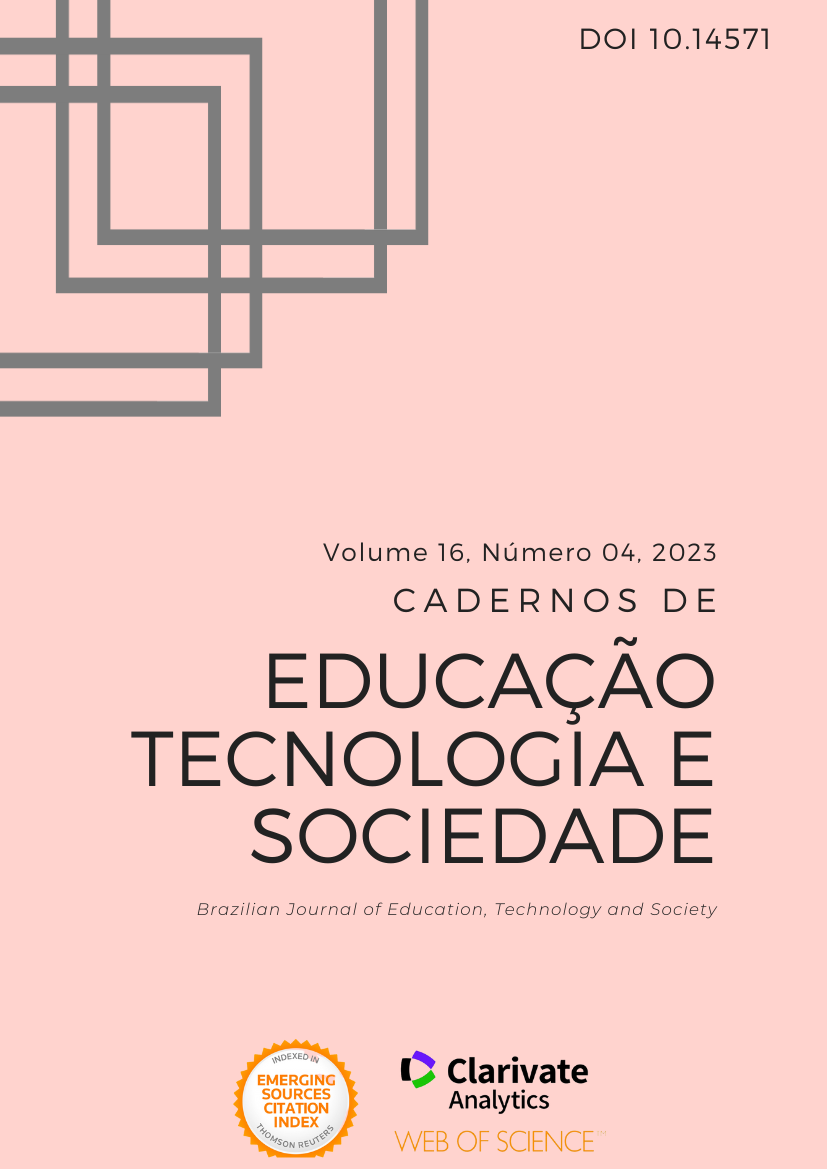O Significado Etimológico dos Antropônimos e seu Papel no Texto Literário
DOI:
https://doi.org/10.14571/brajets.v16.n4.1197-1207Palavras-chave:
linguística, onônimos, antropônimos, texto literárioResumo
Um nome próprio, funcionando em um texto literário, torna-se uma espécie de marcador que determina tanto a originalidade ideológica e artística da obra quanto a estrutura do personagem literário. O autor escolhe um nome para seus heróis não por acaso: o antropônimo ajuda a caracterizar a idade do herói, sua classe e posição social. Os antropônimos possuem um certo colorido estilístico que ajuda a expressar a atitude emocional do autor tanto para com o herói quanto para com a situação em que este ou aquele personagem atua. O significado etimológico do nome carrega algum tipo de informação, cujo significado ajuda a compreender a ideia de obra de arte em todos os níveis semânticos, inclusive o ontológico. Este artigo analisa as histórias "Dagger" e "Bronze Bird" de A. Rybakov, bem como "Green Van" de A. Kozachinsky. Os métodos científicos gerais e o estudo da série onomástica dessas histórias permitem-nos chegar às seguintes conclusões: um nome próprio num texto literário carrega certos significados informativos, emocional-estilísticos e ideológico-artísticos, cuja compreensão e compreensão contribuem para uma leitura mais profunda da obra.Referências
Afrouz, M. (2021). How three different translators of The Holy Qur’an render anthroponyms from Arabic into English: Expanding Vermes’s (2003) model of translation strategies. Names, 69(4), 21-29.
Borovkova, E. (2021). Structural-Semantic and Linguistic-Stylistic Features of O. Wilde’s Maxims. Modern Studies of Social Issues, 13(2), 55-70. https://doi.org/10.12731/2077-1770-2021-13-2-55-70
Demichev, I. (2021). Virtuality and Networking: About the Socio-Cultural Communities of the Information Age (Answer to M.G. Bresler’s Monograph ‘The Ontology of Network Existence’). Modern Studies of Social Issues, 13(2), 14-37. https://doi.org/10.12731/2077-1770-2021-13-2-14-37
Florensky, P.A. (2007). Names. M.: Azbuka, 2007. 336 p.
Hlushchenko, O., Didur, Y., Okulova, L., & Pylypiuk, K. (2021). Exploring Functional Nature of English Anthroponyms in Literary Texts for Children. Arab World English Journal, 12(3), 400-410.
Jamalpour, H., & Yaghoobi-Derab, J. (2022). A review of the philosophy of aesthetics and art based on theoretical and methodological considerations. Revista de Investigaciones Universidad del Quindío, 34(S2), 426-435.
Jamalpour, H., & Derabi, J. Y. (2023). Aesthetic Experience, Neurology and Cultural Memory. Passagens: Revista Internacional de História Política e Cultura Jurídica, vol. `5, no. 2, pp. 340-348, https://doi.org/10.15175/1984-2503-202315208
Karpenko, Yu. A. (1978). Onomastics in fiction. Onomastics: Problems and methods. M.: 1978.
Khripunova, E. V., Panova, E. Р., Bobyreva, E. V., Makevnina, I. A., Chernitsyna, T. V., V Khripunova, E., & V Chernitsyna, T. (2020). Antroponims In Creating a Linguistic World Picture in The Rissian Prose. European Proceedings of Social and Behavioural Sciences, 99., doi 10.15405/epsbs.2020.12.04.46
Kyrchanoff, M. (2021). Orientalist Narratives in American Sci-Fi Prose in the Dune Novels. Modern Studies of Social Issues, 13(1), 52-92. https://doi.org/10.12731/2077-1770-2021-13-1-52-92
Panova, E.P. (2003). Functioning of a proper name in children's literature: monograph. VolgSTU. - Volgograd, 2003. – 16 p.
Pogosyan, V. (2017). Institutional Reconstruction: Complete Alteration? In: Economic and Social Development ESD-2017 (Book of Proceedings), 25th International Scientific Conference on Economic and Social Development. 17th International Social Congress (Moscow, Russia, Oct. 30-31, 2017). Varazdin, Croatia: Varazdin Development and Entrepreneurship Agency. 2017. Pp.: 931-936.
Pogosyan, V. (2019). Change and variability of phenomena in complex social systems. Wisdom, 13(2), 95-103. DOI: 10.24234/wisdom.v13i2.276
Rybakov, A. (2010). “Dagger”, “Bronze Bird”- M: Astrel, 2010 – 411 p.
Olena Volodymyrivna, H., Didur, Y., Okulova, L., & Pylypiuk, K. (2021). Exploring Functional Nature of English Anthroponyms in Literary Texts for Children. Arab World English Journal (AWEJ) Volume, 12.
Superanskaya, A.V. (2018). Modern Dictionary of Personal Names: Comparison. Origin. Spelling. Iris-Press.
Suprun, V.I. (2000). Onomastic field of the Russian language and its artistic and aesthetic potential. – Volgograd: Change, 2000.
Vagizova, V. (2021). Political Cartoon as a Genre of Polycode Text Within the Propaganda Discourse. Modern Studies of Social Issues, 13(2), 71-91. https://doi.org/10.12731/2077-1770-2021-13-2-71-91
Vural, H. (2019). The Relationship of Personality Traits with English Speaking Anxiety. Research in Educational Policy and Management, 1(1), 55-74. https://doi.org/10.46303/repam.01.01.5
Waychunas, W. (2020). Where Teachers Thrive: A Book Review. Research in Educational Policy and Management, 2(2), 129-132. https://doi.org/10.46303/repam.2020.7
Yehya, F., Barbar, A., & Abou-Rjelil, S. (2019). Learning with simulations: Influence of a computer simulation with hand- on activities on students’ learning of the physics capacitors’ concepts. Research in Social Sciences and Technology, 4(1), 1-29. https://doi.org/10.46303/ressat.04.01.1
Yemelyanov V., Yemelyanova N., Nedelkin A. (2018). Neural network for decision support to determine the operating mode of lined equipment. MATEC Web of Conferences, 224, 04005. DOI: 10.1051/matecconf/201822404005.
Yunusova, G. X. (2021). Functioning of Proper Names in the English Literary Text. Traektoriâ Nauki, 7(05), 3006-3011.
Downloads
Publicado
Edição
Seção
Licença
Copyright (c) 2024 Elena Panova, Elena Tjumentseva, Natalya Bocharnikova, Natalia Filimonova, Elena Romanyuk, Zulkhumar Jumanova, Julia Lobanova, Ilona Koroleva

Este trabalho está licenciado sob uma licença Creative Commons Attribution 4.0 International License. A revista segue a política para Periódicos de Acesso Livre, oferecendo acesso livre, imediato e gratuito ao seu conteúdo, seguindo o princípio de que disponibilizar gratuitamente o conhecimento científico ao público proporciona mais democratização internacional do conhecimento. Por isso, não se aplica taxas, sejam elas para submissão, avaliação, publicação, visualização ou downloads dos artigos. Além disso, a revista segue a licença Creative Common (CC BY) permitindo qualquer divulgação do artigo, desde que sejam referenciados o artigo original. Neste sentido, os autores que publicam nesta revista concordam com os seguintes termos: A) Os autores mantém os direitos autorais e concedem à revista o direito de primeira publicação, com o trabalho simultaneamente licenciado sob a Creative Commons Attribution License (CC BY), permitindo o compartilhamento do trabalho com reconhecimento da autoria do trabalho e publicação inicial nesta revista. B) Autores têm autorização para distribuição não-exclusiva da versão do trabalho publicada nesta revista (ex.: publicar em repositório institucional e não institucional, bem como capítulo de livro), com reconhecimento de autoria e publicação inicial nesta revista. C) Autores sãoo estimulados a publicar e distribuir seu trabalho online (ex.: repositórios online ou na sua página pessoal), bem como aumentar o impacto e a citação do trabalho publicado.

